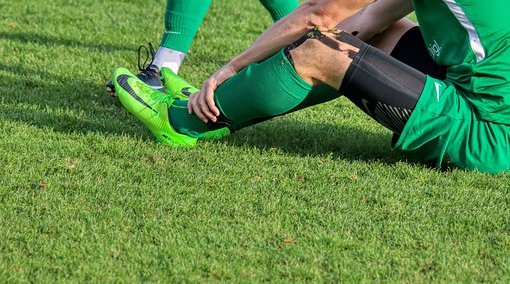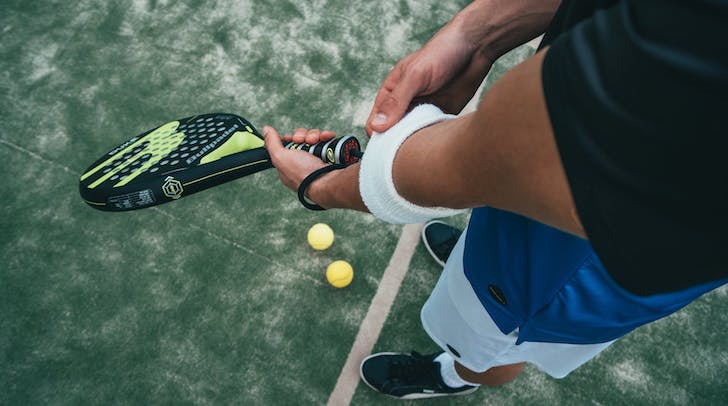It is clear that an increasing number of people, young and old, are becoming active to acquire the health benefits that exercise offers. Ironically, participation in any type of physical activity places the athlete in situations in which injury is likely to occur.
Sports injuries are caused by trauma of different degrees. They can be classified into acute and chronic injuries. Acute injuries occur from a single, well-defined incident and may follow contact or non-contact forces, such as a shoulder dislocation or ankle sprain. On the other hand, chronic (or overuse) injuries follow an accumulation of micro-trauma to bone, cartilage, ligaments, tendon and muscles. Patients can seldom identify an exact incident, or force that caused an overuse injury.
The age of occurrence of overuse injuries varies. Any age group can be affected, but they are most common in elite athletes aged 20-29 years, and noncompetitive athletes aged 30-49 years.
The most common sports injuries are:
Sprains and strains
A sprain occurs when a ligament (band of connective tissue that attaches bone to bone) tears from overstretching. A sprain is most common in ankles, wrists and knees. A strain is when muscle or tendon tears from being overstretched. Strains and sprains can range from being very minor to complete ruptures of the ligament, muscle or tendon.

Knee injuries
Mild knee injuries such as ITB syndrome, patellofemoral pain syndrome and tendonitis are common in runners or sports involving running, people who begin a training program with inadequate fitness and those who suddenly increase training volume or intensity. Ligamentous injuries to the knee are more catastrophic and often require surgery in severe cases or in players wishing to return to competition. The most commonly injured ligaments that are injured are the anterior cruciate ligament (ACL) and the medial collateral ligament (MCL). 80% of these injuries are caused by non-traumatic mechanisms, such as twisting awkwardly. Injury to the menisci may also occur (either alone or in conjunction with ligamentous injury).
Fractures
Broken bones may occur from non-traumatic mechanisms (e.g. awkward landings), by trauma (e.g. tackle or crash) or by overuse (stress fractures). Most fractures are considered an emergency and need to be addressed by medical staff. Stress fractures are an accumulation of small breaks in the bone, which may eventually lead to a complete break. Fractures lead to time away from activity and immobilisation of the area. Muscle wasting and loss of fitness often occur and it is important to undergo appropriate rehabilitation guided by a physical therapist before returning to sport.
Dislocations
These occur when a force pushes the bones of a joint out of alignment. Dislocations may be complete or partial (known as a subluxation). These injuries are most common in contact sports. Dislocations are usually considered an emergency and require medical staff to place the joint back into alignment. Sometimes the joint may realign itself, and this is more common in subluxations. The most commonly dislocated joints are the finger joints and shoulders. Some severe injuries may require surgery, but most are treated conservatively with physiotherapy.
Tennis or golf elbow
Tennis and golfer’s elbow is usually seen with athletes performing a great deal of gripping activities. It can be labelled as an overuse sports injury, also known as medial or lateral epicondylitis. Due to the repetitive action, the tendons of the forearm can become inflamed and make any wrist or hand motions extremely painful. Often, athletes will complain of a lack of grip strength. Early treatment options for tennis or golf elbow involve rest and icing the inflamed area. Doctors will often prescribe anti-inflammatory medication, or even a brace, to try to take pressure off the area and prevent further elbow injuries. Injections with corticosteroids or PRP is sometimes recommended. Stretching techniques and other strengthening exercises applied by a physical therapist can help to reduce the stiffness and gradually build strength, returning athletes to their sporting activities.

Shin splints
Athletes with shin splints complain of pain in the lower leg bone, or the tibia. Shin splints are most often found in athletes who are runners or participate in activities with a great deal of running, such as soccer. Athletes typically get shin splints diagnosed early in their season, as they increase activities or mileage too quickly. Shin splints are best prevented and/or treated with rest, icing and gradually increasing running activities. Purchasing shoes with good arch support can also reduce pain in the shins and help with recovery.
Useful tips to avoid sports injuries:
- Be in proper physical condition to play a sport
- Wear appropriate protective gear and equipment
- Know and abide by the rules of the sport
- Rest: rest is a critical component of proper training. Rest can make you stronger and prevent injuries of overuse, fatigue and poor judgment
- Always warm-up before and cool-down after playing
- Avoid playing when very tired or in pain
- Stretch
What to do if you get injured:
Resting the injured body part is of utmost importance. It is never right to “push through” the pain. Pain is the way your body is trying to tell you that there is something wrong going on. You should always listen to that feedback!
If resting, modifying your activities and applying some ice/heat or taking painkillers does not improve your pain or if the pain/swelling is so severe that it significantly affects your daily activities, you need to seek professional help. It is quite important to not delay a visit to the doctor much. Prompt diagnosis and treatment can save a lot of time and trouble and have a better outcome.
Do not return to sport if you are still having even minor symptoms or unless you get cleared by your physician.

Dr. Harry Kremmydas
Specialist Orthopaedic Surgeon
Mediclinic Al Sufouh and Mediclinic Dubai Mall